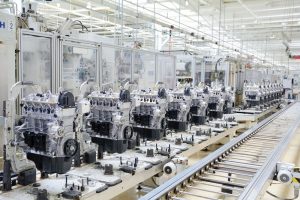As technology continues to move forward and advance, scanning vision systems are becoming more accessible to manufacturers. Whether you’re operating in the display industry or are involved in semiconductor manufacturing or anything in between, scanning vision technology can be found along the production lines. Manufacturers find that any item that must adhere to strict standards rely on some kind of machine vision scanning equipment to adhere to the rigid criteria.
In the past machine vision scanning technology was found in the electronics and automotive industries but recently there has been a growing need in the market segments of pharmaceutical and medical device manufacturers as well as in the food and beverage industry. Optical technologies are being utilized to more fully help manufacturers adhere to strict regulatory standards.
Company owners are always looking for ways to limit production defect rates and minimize waste of goods and machine vision cameras are playing a larger role in the tools that manufacturers utilize to adhere to manufacturing standards. The cameras themselves are being tasked with incorporating more highly sensitive sensors to capture even more minute changes as the items move along a manufacturing line.
Consumer demand for smartphones, tablets, high end electronics and other equipment continue to place a high demand on manufacturers as they strive to meet the constant demand. To do that, they need to enhance their machine visioning systems to make production move along more quickly, but at higher levels of proficiency.
Lens distortion is still an issue with which manufacturers grapple because even though camera resolutions have been enhanced dramatically in recent years, they may blur at the edges of a captured image.
To address distortion, some manufacturing companies are utilizing a technology called 2-D hand eye calibration; this technology incorporates the “eyes” which are the individual cameras and the “hand” which is the 2D “motion stage” where the manufactured parts are placed. This multi-camera robot guidance system means each camera has an independent field of view. The camera placement means that the individual camera will “understand” the portion of the part that it sees and then allow the software to determine whether there are any aberrations.
Camera manufacturers are researching a time delayed CMOS camera that is anticipated to take production line scanning to a higher level of effectiveness that will also work at higher speeds, use less power and offer better response rates.